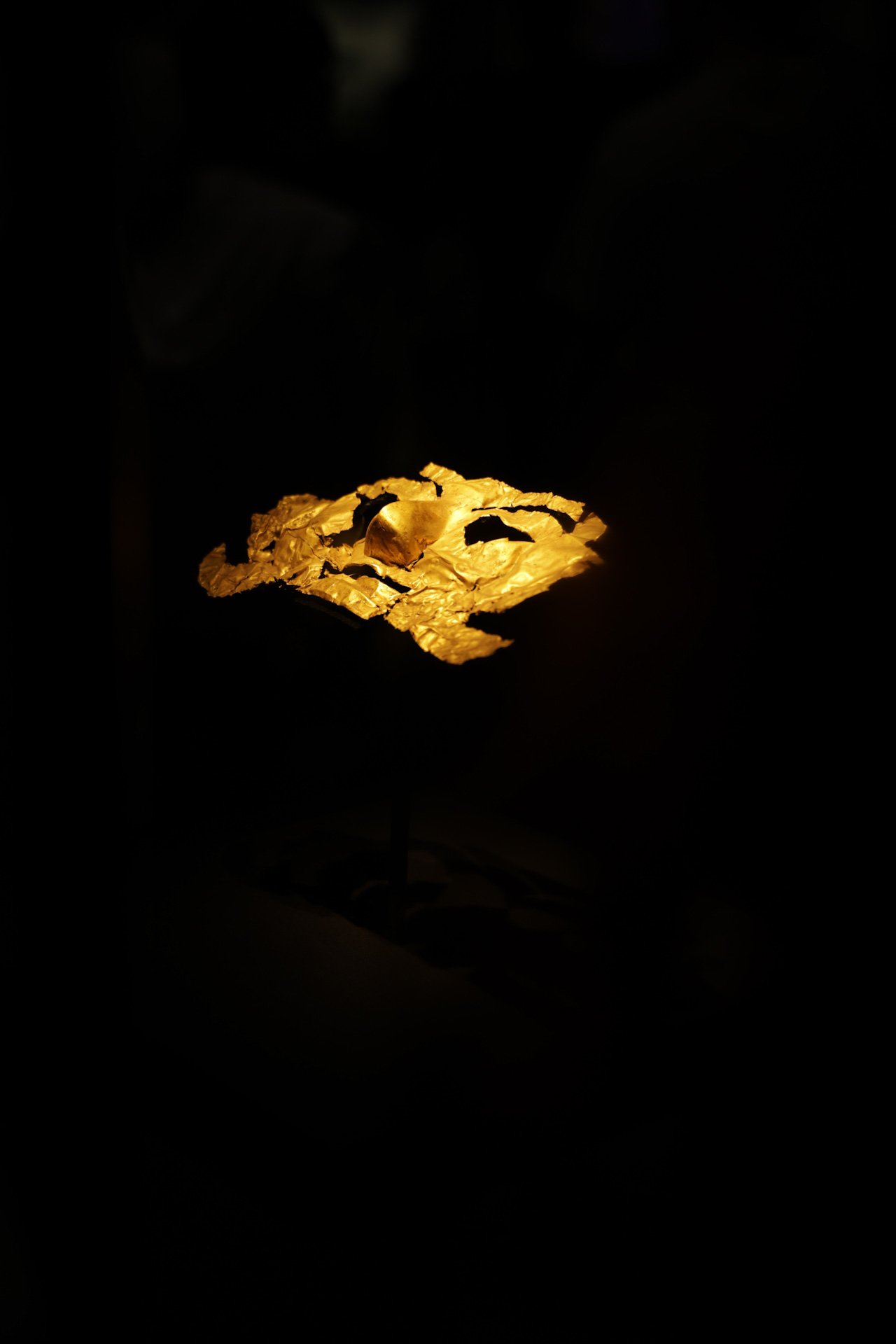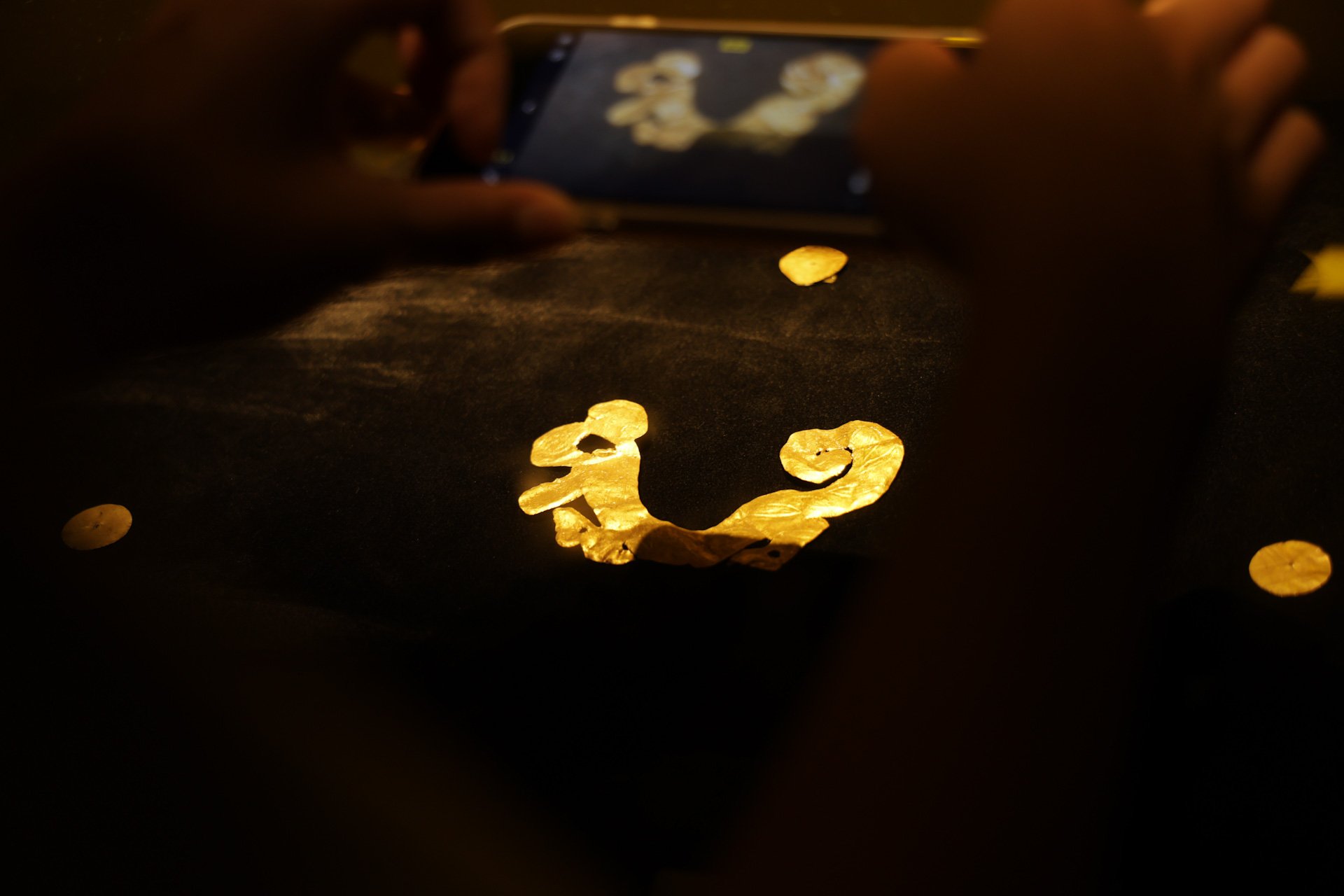Exploring Sanxingdui: A Journey Through Time and Creativity
This is a spontaneous journey, a “special forces” trip filled with passion and anticipation. The regret of not traveling during the May Day holiday lingered in my heart until I accidentally discovered that I could book tickets to Sanxingdui two days in advance. At that moment, the urge to travel ignited like a spark. We quickly packed our bags and set off on this adventure to make up for the missed holiday, carrying with us a heart full of expectations.
As an IT marketer with a passion for art, my longing for Sanxingdui had been growing for a long time. This ancient city, covering 12 square kilometers and dating back over 3,000 years, is a treasure trove of ancient art. I was eager to witness the mysterious and exquisite artifacts of the ancient Shu civilization, to feel the creativity and wisdom of our ancestors.
Pottery, ©Kevin Yuan
Upon arriving at Sanxingdui, I was immediately enveloped by its mysterious aura. Stepping into the museum, I was greeted by a collection of astonishing bronze artifacts—peculiar bronze masks, massive standing figures, intricate jade pieces, and golden scepters, each seemingly telling a story from a distant past. The famous bronze mask with protruding eyes, in particular, caught my attention. Its exaggerated eyes seemed to pierce through time, staring directly into my soul. I stood before the display case, mesmerized, wondering how people from over 3,000 years ago could possess such advanced imagination and craftsmanship.
As an IT marketer, I couldn’t help but draw parallels between these ancient Shu artworks and modern design. The bold creativity and unconventional shapes reminded me of today’s minimalist and futuristic designs. Perhaps, if these bronze masks were featured in a modern marketing campaign, they would create a visual and cultural sensation. The fusion of art and technology seemed no longer a distant dream.
Walking through the archaeological park, the vastness of the 12-square-kilometer site made me feel the grandeur of the ancient city. The air was filled with the scent of history, and every inch of the ground seemed to whisper tales of the past. I imagined the bustling life of the city over 3,000 years ago, pondering the stories behind these artifacts and the beliefs they represented.
Sanxingdui is not just an archaeological site; it is a testament to the diversity and unity of Chinese civilization. The unearthed artifacts showcase the unique charm of the ancient Shu culture, which both intersects with and differs from the Central Plains culture. The bronze standing figure, tall and solemn, and the golden scepter with its mysterious symbols, evoked a sense of awe for the cultural power that transcends time.
For someone like me who loves uncovering stories, Sanxingdui was like an open book, each page filled with surprises. As I admired the artifacts, I reflected on the essence of creativity—whether it was bronze casting 3,000 years ago or digital marketing today, humanity’s desire for self-expression remains unchanged.
©Kevin Yuan
This “special forces” trip, though brief, was incredibly fulfilling. From the decision to set off to standing on the grounds of Sanxingdui, the entire process was filled with tension and excitement. But when I finally faced these ancient artworks, all fatigue vanished. As an IT marketer, I found sparks of inspiration; as an art enthusiast, I was deeply moved by the splendor of the ancient Shu civilization. This trip was not just a compensation for the missed May Day holiday but also a baptism of the soul.
On the way back, my mind was filled with images of those peculiar masks and artifacts, yet my heart was at peace. Sanxingdui not only met my expectations but also gave me more—reflections on history, art, and creativity. This spontaneous journey was like an unexpected gift, allowing me to find a spiritual sanctuary amidst my busy life.
If you also have a restless heart, why not take a trip to Sanxingdui? Perhaps you, too, will find your own surprise and inspiration here.
In the Sanxingdui Museum, I was deeply shocked by the unique design of the bronze artifacts, especially their modular construction reminiscent of “Lego bricks.” This design not only showcases the astonishing creativity of the ancient Shu people but also reflects the perfect blend of craftsmanship and art from over 3,000 years ago.
The most striking piece was the Bronze Sacred Tree, standing at 3.96 meters tall. This tree was not cast in one piece but assembled from multiple independent components—trunk, branches, and decorations like birds and animals. Each leaf and bird was meticulously crafted, like individual “modules” that could be disassembled and reassembled. This “Lego-like” design amazed me: the ancient Shu people had mastered such a flexible construction method over 3,000 years ago! Standing before the tree, I could almost feel its dynamic beauty—the branches stretching, the birds ready to take flight, as if it were a symphony of life and nature, narrating the ancient Shu people’s imagination of the universe.
Golden Mash, ©Kevin Yuan
This modular design was not unique to the tree. Many bronze artifacts showed similar traits, with small ornaments or vessel parts connected through mortise and tenon joints or welding, creating a harmonious whole. This design not only served practical purposes but also added layers and depth to the art, making me want to reach out and explore how they were assembled.
The bronze artifacts of Sanxingdui are not just technical marvels but also artistic treasures. The famous bronze masks, with their peculiar shapes, are full of surreal imagination. The most iconic mask with protruding eyes seems to break free from the bronze, staring directly at the viewer. Their smooth lines and tension-filled expressions, with a mysterious power in their brows and eyes, make one wonder: are these masks depictions of gods or fantasies of the unknown? Under the museum lights, the masks gleamed with a faint bronze glow, as if whispering ancient legends.
Then there’s the Bronze Standing Figure, standing at 2.62 meters tall, wearing a high crown, holding a mysterious object, with flowing robes that seem to be in the midst of a sacred ritual. Its design is simple yet solemn, with precise proportions and a sense of movement. The figure’s face is serious and profound, as if gazing into the distance with timeless dignity. These artistic designs are bold and unique, reflecting the ancient Shu people’s deep expression of their spiritual world, leaving me, a modern viewer, deeply moved.
The marvel of Sanxingdui’s bronze artifacts lies not only in their design but also in the superb craftsmanship behind them. Take the Bronze Sacred Tree, for example; each part was made using the lost-wax casting method, with individual components cast separately and then assembled through welding or mortise and tenon joints. This advanced technique ensured the exquisite details, such as the textures on the leaves and the feathers on the birds, were flawlessly presented. The bronze masks were created using a combination of overall casting and partial welding, with exaggerated eyes and ears achieved through precise craftsmanship, without any flaws.
©Kevin Yuan
There’s also the famous golden scepter, with intricate fish and bird patterns engraved on its surface. This required exceptional smelting and chiseling skills to leave such clear and complex designs on soft gold. These techniques not only demonstrate the ancient Shu people’s mastery of metalworking but also enhance the artistic effect of the bronze artifacts. Standing before these exhibits, I could almost hear the roar of the furnaces and see the craftsmen sweating as they turned imagination into eternity.
As an IT marketer, I couldn’t help but connect these bronze designs with modern concepts. The modular “Lego-like” construction resembles today’s product design, which values detachability and flexibility. The surreal style of the masks and standing figure reminds me of contemporary futuristic art. If these bronze artifacts were displayed in a modern gallery or incorporated into a marketing campaign, they would undoubtedly create a visual and cultural sensation. The fusion of art and technology, already evident in Sanxingdui’s bronze artifacts, continues to inspire awe across 3,000 years.
These “Lego-like” bronze designs, exquisite artistic shapes, and superb craftsmanship made the Sanxingdui trip a feast for both the eyes and the soul. They are not just witnesses to the ancient Shu civilization but also timeless chapters of human creativity. Each time I gazed at them, I felt as if I were conversing with ancestors from 3,000 years ago, experiencing a timeless aesthetic resonance. If you have the chance, come to Sanxingdui and explore the stories behind these bronze artifacts; I believe you, too, will be deeply moved by their charm.





